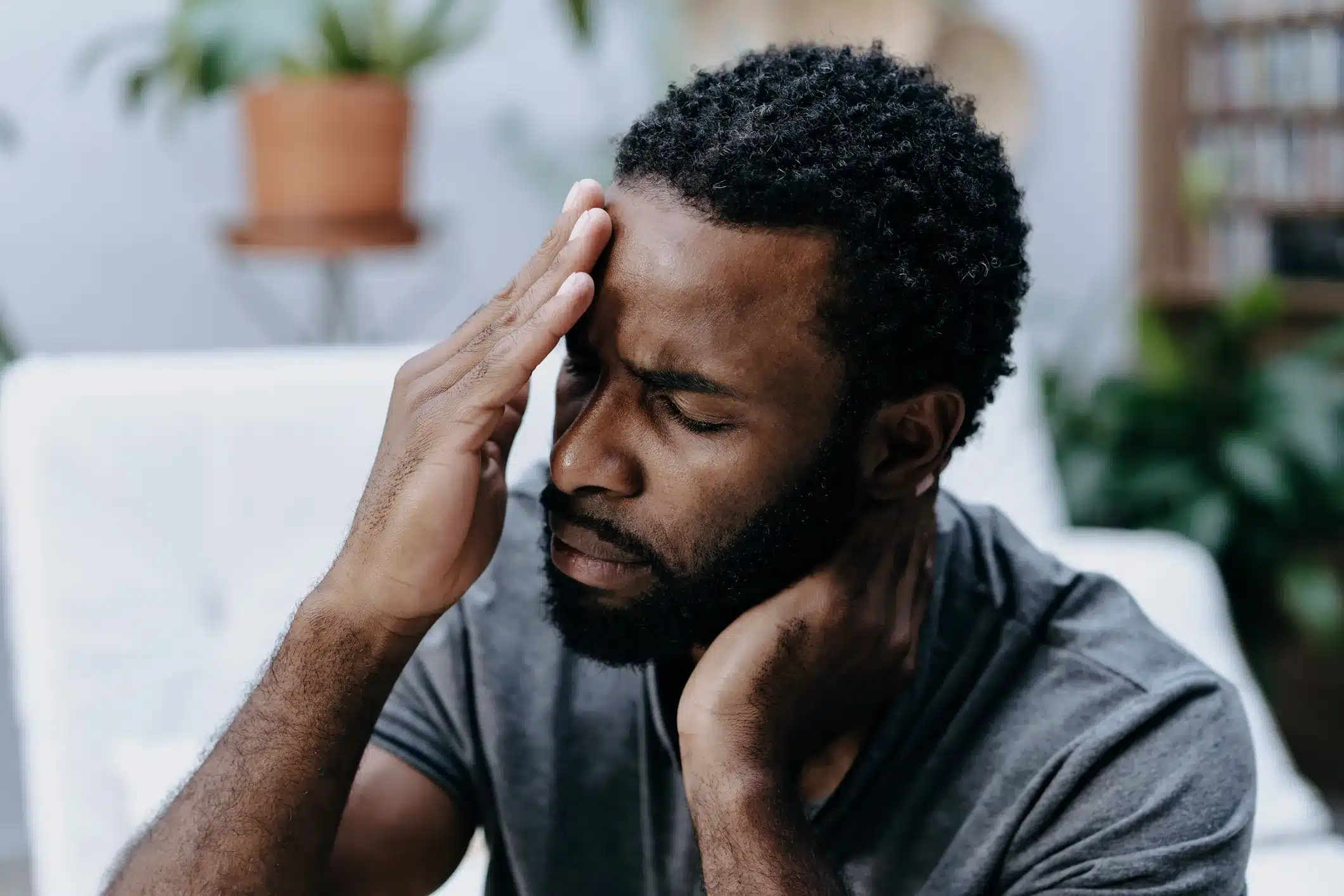
A headache is a headache, right? Actually, there are approximately 150 different types of headaches! Let’s talk about some of the most common headaches you might encounter.
What is a Headache?
A headache is a pain in the head, face, or neck. It can have different qualities, such as aching, dull, sharp, squeezing, stabbing, or throbbing pain. Headache pain can start gradually or strike suddenly, ranging from mild to excruciating.
Nearly everyone will experience a headache at some point. For some, headaches are a rare nuisance. However, for others, headaches can interfere with daily responsibilities such as school, work, and relationships. If headaches keep you side-lined, register online and let MainStreet get you back in the game!
Categories of Headaches
Headaches fall into two main categories:
- Primary headaches occur when an underlying medical condition does not cause the headache. In other words, the headache is the medical condition.
- Secondary headaches occur when an underlying medical condition causes the headache, and the headache is a symptom of the medical condition.
Primary headaches are further classified into two categories:
- Episodic headaches occur no more than 15 days a month.
- Chronic headaches occur more than 15 days a month.
Primary Headaches
The most common primary headaches are cluster, migraine, and tension-type headaches.
Cluster Headache
Common in men between 20 and 40, cluster headaches tend to run in families and are often associated with tobacco use.
Cluster headaches typically last about 15 minutes to three hours but recur in clusters. You may experience one headache a day or as many as eight headaches a day every day, usually for a period of six to 12 weeks. After the cluster period, you may have three to 12 months without another bout of cluster headache attacks.
The pain of cluster headaches is usually severe and described as sharp or stabbing on one side of the head. Most people feel these headaches behind the eye or at the temple. Some additional signs of a cluster headache include possible:
- Eye drooping, redness, and watering on the side of the headache
- Nose drainage or stuffiness
- Facial sweating
Treatment for cluster headaches includes 100% oxygen and prescription medications.
Migraine Headache
Migraine headaches are more common in women, tend to run in families, and are associated with tobacco use.
Migraines can last for four to 72 hours and are recurring. Some people experience just a few migraines a year, and others experience 15 or more migraines a month.
Migraine pain usually starts slowly as a pulsating and throbbing pain on one side of the head. You may have an aura before the pain, which is typically visual disturbances that warn of an impending migraine. The pain usually worsens with movement, light, noise, and some smells and is often accompanied by:
- Dizziness
- Nausea
- Vomiting
- Sensitivity to light and touch
Many people with migraines report specific triggers for their migraines. These include things like stress, particular foods, alcohol, changes in sleep patterns, and hormonal changes. Migraines are treated with over-the-counter and prescription medications.
Tension-Type Headache
This is the most common headache. There are some risk factors identified for tension-type headaches, including:
- Female gender
- Younger age
- Fatigue
- Sleep disorders
- Migraine history
- Depression history
The headache pain lasts 30 minutes to seven days and is usually mild or moderate. It is generally felt on both sides of the head and described as dull, pressure, head fullness, or band-like. You may also feel the pain in your jaws and shoulders.
Tension-type headaches can be episodic or chronic and are most often treated with over-the-counter nonsteroidal anti-inflammatory drugs (NSAIDs) such as ibuprofen or naproxen.
Exercise / Exertion Headache
An exercise or exertion headache is rare, but it can be a primary or a secondary headache, depending on the circumstances.
Exercise headaches are usually:
- Brought on during or after strenuous physical activity.
- Pulsating and throbbing pain felt on both sides of the head.
- Lasting from five minutes to 48 hours.
- Treated with NSAIDs such as indomethacin or naproxen 30 minutes before exercise.
Exercise headaches may be secondary headaches indicating an underlying medical condition in about 20% of cases. You should seek immediate medical attention if these headaches are new to you. Your provider will want to rule out possible underlying conditions such as:
- Bleeding in the brain
- Blood vessel abnormalities altering brain blood flow
- Brain lesions
- Previous traumatic injury
Secondary Headaches
Some secondary headaches are caused by minor underlying medical conditions, like a sinus infection, and others are much more serious.
Sinus Headache
Sinus headaches occur when you have a sinus infection. The pain is usually dull or throbbing, felt in the face on both sides and worsens when you move suddenly or bend over. Sinus headaches last for as long as the sinus infection lasts but usually resolve in seven to 10 days.
The treatment for a sinus headache is to treat the sinus infection. This may include antibiotics if you have a bacterial infection. Most sinus infections are viral and are treated with antihistamines, decongestants, steroids, and over the counter pain relievers.
Thunderclap Headache
A thunderclap headache is rare and may be a primary or secondary headache. It comes on suddenly like a clap of thunder and causes extreme pain within the first minute. Most people describe it as the worst headache of their lives. It may last from five minutes to a few hours.
You should seek immediate medical attention the first time you experience a thunderclap headache. It could be an indication of a medical emergency, such as:
- Bleeding from the pituitary gland
- Blood vessel blockages, inflammation, ruptures, or tears
- Brain injury
- Stroke
- Sudden increase in blood pressure
If your provider rules out an underlying medical condition, you may have primary thunderclap headaches, which are not dangerous. A cough or physical exertion may trigger them.
Turn to MainStreet Family Care
Let us help you uncover the cause of your headache and find pain relief. Register online to be seen at the closest MainStreet Family Care clinic.
You can wait from the convenience of your home or even run errands until we’re ready to see you. We’ll text you when it’s time to head to the clinic.
MainStreet loves walk-ins and accepts them daily! However, walk-ins may face longer in-clinic wait times, which is why we highly recommend our online registration system. Walk-ins join the same queue as those who register online.






